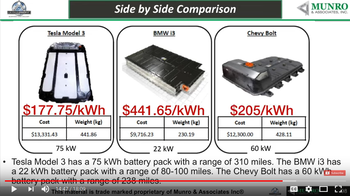Based on the battery temperature data I've seen, unless you frequently quick charge, the temperature of the battery tends to stay fairly close to ambient temperature, regardless of the type of cooling that the battery pack has.
After all, most of the time the car just sits around - you might spend an hour a day driving, then 1-2 hours a day level 2 charging, which is negligible in terms of how much it heats the battery. For Tesla, level 2 charging actually heats the battery a bit depending on ambient temperatures, mainly because of the AC/DC converter is water cooled and Tesla actually sets a 86F/30C passive heating target for the battery, so any waste heat from the AC/DC converter is pushed into the battery.
Water cooling is vastly superior when you need to shed heat quickly - as Tesla does after Supercharging since now it actively heats the battery to something like 40C and it's not uncommon to have the battery hit 60C during Supercharging in hot weather.
So I think Tesla's actually tend to see higher temperatures than most other cars - and despite this, their batteries tend to last longer.
Now the jury is still out on the Model 3 / Y batteries, but at least for the original batteries in the Model 3, it's not uncommon to have lost 10% capacity after just 3-4 years, regardless of how many miles you've put on it, unless you baby it and live in a cool climate. Tesla still has has some dud-chemistries - the cells used in the 90 kWh cars are pretty notorious for rapid capacity loss - often having less capacity than 85 kWh cars despite having fewer miles and being newer. Note that there could be multiple tweaks to the chemistry in "85 kWh" and "90 kWh" and "100 kWh" batteries. Some really good data on this posted by wk057 here:
Wiki - Sudden Loss Of Range With 2019.16.x Software
I'm still waiting for the million-mile battery to hit the market - I'd be really happy to see a 15 year, 250k mile battery hit the market that would retain 70% capacity and 70% Supercharging speeds regardless of how you treat it. For most people, it would last significantly longer.




